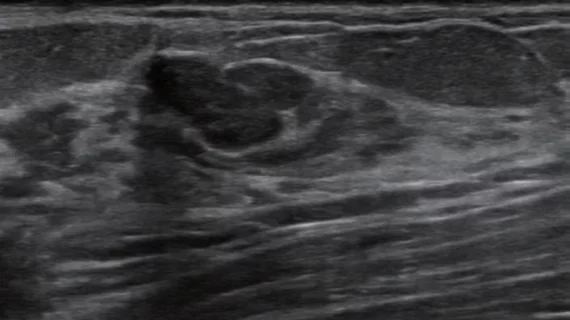CAD software is especially beneficial for radiologists in rural settings
When used as an assistive tool, computer-aided diagnosis (CAD) software significantly improves diagnostic performances of radiologists interpreting breast ultrasound exams, even among readers with minimal experience in doing so.
New data related to the effectiveness of CAD software in breast imaging settings was shared on May 24 in the American Journal of Roentgenology. Authors of the new paper noted that the results of their work are especially relevant due to the setting in which the research took place—secondary and rural hospitals with radiologists lacking breast ultrasound expertise.
Prior work supporting the use of CAD tested the software’s efficacy in urban areas and academic settings with radiologists specializing in breast imaging practice. Judging the software’s utility in rural settings with less experienced readers is important for expanding access to and improving care for patients, the authors noted.
For this study, the team assessed the cases of 313 patients from eight secondary and rural hospitals. Each patient underwent biopsy or surgical resection between November 2021 and September 2022. The patients also had breast ultrasound exams completed prior to their procedure. Radiologists without breast imaging subspecialty training, who were not frequently exposed to breast ultrasound exams, were tasked with conducting the scans and assigning a BI-RADS to each exam. CAD software was then applied and used to either upgrade assigned category 3 lesions to category 4A, or downgrade reader-assigned BI-RADS category 4A lesions to category 3.
The application of CAD resulted in an upgrade of 6% of category 3 assessments, of which 16.7% (1/6) were confirmed malignant. The biggest observed benefit was how many category 4A lesions were downgraded; 79.1% (87/110) were downgraded to category 3, of which 4.6% (4/87) were malignant.
These findings suggest that CAD use has “particular potential to reduce the frequency of benign breast biopsies,” corresponding author of the paper Li-Gang Cui, MD, from Peking University Third Hospital in Beijing, China, and colleagues explained. This would be particularly impactful in rural settings where staffing shortages make scheduling and conducting procedures more difficult, they added.
The study abstract is available here.

